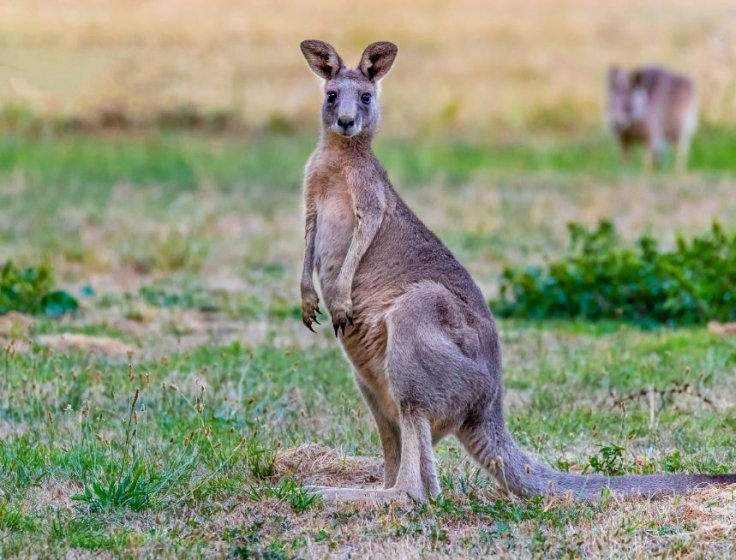Most trainers and owners of domesticated animals (including wild ones) can glean without difficulty what the creatures are trying to communicate. However, the question of whether undomesticated animals living in the wild can intentionally communicate with people has fascinated scientists for ages. Now, a study has stated that wild kangaroos can indeed 'talk' to human beings.
In a first-of-its-kind study, researchers from the University of Sydney and the University of Roehampton discovered that kangaroos that had never been domesticated were found to gaze at humans while trying to obtain food placed inside a locked box. The study challenges the notion that only tamed animals such as dogs or goats can communicate intentionally.

"Our research shows that the potential for referential intentional communication towards humans by animals has been underestimated, which signals an exciting development in this area," said Dr. Alan McElligott, corresponding author of the study, in a statement.
Communication In Untamed Animals
The authors explained in the study that years of domestication are believed to have led to improved communication capabilities between animals that are non-primates and human beings. However, the number of such animals (horses, dogs, goats, and wolves) is restricted.
While some animals can point towards what they want (in this case, inaccessible food), those without hands gaze at humans when faced with unsolvable tasks. These gazes are often comprehended as efforts at making intentional communication. In order to learn more about such communication, the researchers used kangaroos, which are marsupials that have never been domesticated. They are also social animals like goats or dogs.

"Kangaroos are iconic Australian endemic fauna, adored by many worldwide but also considered as a pest. We hope that this research draws attention to the cognitive abilities of kangaroos and helps foster more positive attitudes towards them," said Dr. Alexandra Green, co-author of the study.
When Kangaroos 'Talk'
For the study, which was conducted at three locations in Australia, the scientists placed food inside a box for kangaroos to get. Such an experiment is called "the unsolvable problem task". A human was present within the close proximity of the kangaroo and the food.
Remarkably, ten out of the 11 tested kangaroos, looked at the person who had placed the food inside the box actively and sought to get his attention. Also, nine of the 11 kangaroos exhibited alternation of gazes between the person present and the food, which is considered an enhanced form of communication.

The current study develops on previous research that has examined communication demonstrated by domesticated animals such as goats and dogs, and the hypothesis of whether domestication is the reason behind the development of intentional communication in animals. Dr. McElligott, through his older work, found that goats understood human cues. The findings of the present study suggest that kangaroos also may be capable of adapting their social behaviors in order to interact with people.
"Through this study, we were able to see that communication between animals can be learnt and that the behavior of gazing at humans to access food is not related to domestication. Indeed, kangaroos - showed a very similar pattern of behavior we have seen in dogs, horses and even goats when put to the same test," concluded Dr. McElligott.









